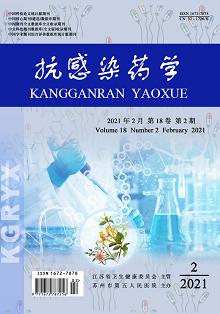ZHANG Yi, Cheng Yun-jie
Objective: To analyze the usage of carbapenems antibiotics in a hospitals, and to provides reference for rational medication of carbapenems antibiotics in clinical. Methods: Data related to the clinical medication of carbapenems antibacterial drugs in hospitals from 2015 to 2018 were extracted to analyze the clinical usage of carbapenems, average daily consumption and the usage of each department, as well as the changes in drug resistance of pathogenic bacteria. Results: In carbapenem antibiotics used from 2015 to 2018, meropenem DDDs ranked the first, imipenem followed, and was used less than biapenem and faropenem. They all showed an increasing trend year by year; However, the DUI values of meropenem and imipenem were all greater than 1 and showed an increasing trend year by year, so the drug use was unreasonable. The DUI values of both biapenem and faropenem were less than 1, and the drug use was reasonable. The total amount of carbapenem antibiotics used in the past 3 years increased year by year, of which meropenem drug used in the first place and showed an increasing trend year by year, while faropenem consumed the least amount. DDc value in biapenan year was the highest. In the past 4 years, the total use of carbapenems antibacterial drugs increased year by year, and the department dosage ranged from high to low, including Hematology Department, Respiratory Department, ICU Department, Obstetrics and Gynecology Department, and Nephrology Department. The drug resistance rate of Pseudomonas aeruginosa to carbapenems antibacterial drugs showed an increasing trend year by year, the drug resistance rate of Pseudomonas aeruginosa to meropenem was 38.19%, and the drug resistance rate of Pseudomonas aeruginosa to imipenem was 40.81%. The drug resistance rate of Acinetobacter baumannii also showed an increasing trend year by year. The drug resistance rate of meropenem was as high as 48.25%, and that of imipenem was as high as 45.85%. Conclusion: The clinical medication of meropenem and imipenem in hospitals was unreasonable, and the drug resistance rate of bacteria increased significantly, and increased the economic burden of patients. It was suggested to strengthen supervision, control drug cost, and use carbapenems antibiotics scientifically and rationally.
